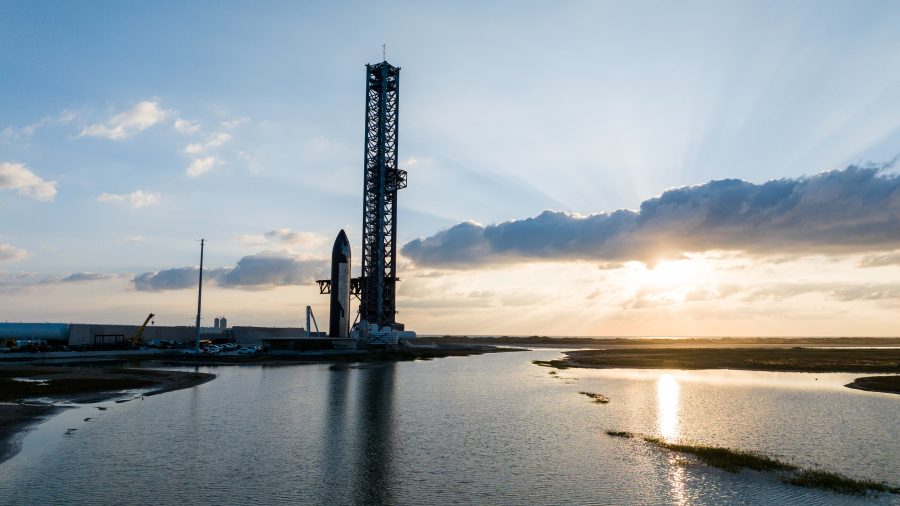
SpaceX, the aerospace manufacturer and space transportation company founded by Elon Musk, has made significant strides in its ambitious Starship program. Recently, SpaceX announced via X that Starship has been moved to the launch pad at Starbase in preparation for its sixth flight test. This development marks another pivotal moment in the journey towards making space travel more accessible, efficient, and ultimately, economical.
Starship’s Role and Design
Starship, along with its Super Heavy booster, forms SpaceX’s fully reusable transportation system designed for a variety of missions including Earth orbit, lunar flights, and interplanetary travel, particularly to Mars. Here’s what makes Starship unique:
- Reusability: Both the Starship spacecraft and Super Heavy booster are designed to be reused, significantly reducing the cost of space travel compared to expendable rockets.
- Power: Starship is powered by SpaceX’s Raptor engines, which use liquid methane and liquid oxygen, providing a high specific impulse and cleaner combustion compared to traditional rocket engines.
- Size: With a height of nearly 400 feet when combined with the Super Heavy, Starship is one of the tallest rockets ever built, aiming to carry up to 100 passengers or large cargo loads.
- Capabilities: Beyond Mars missions, Starship is intended for satellite delivery, lunar base construction, and even ultra-fast point-to-point travel on Earth.
Recent Developments:
- Previous Flights: The journey to the sixth flight test has been marked by both successes and learning experiences. The fifth flight test saw the Starship Super Heavy booster successfully return to near its launch site, where it was caught by the “Mechazilla” structure, a first in rocket technology.
- Innovation in Testing: SpaceX has employed innovative testing strategies, including full stack tests, static fire tests, and high-altitude flights. Each test provides critical data necessary for refining the design and operation of Starship.
- Environmental and Regulatory Considerations: The development of Starship has not been without its challenges, particularly with environmental concerns and regulatory hurdles. The Federal Aviation Administration (FAA) has been involved in ensuring that launches do not significantly impact the environment, leading to delays but also ensuring compliance with safety and ecological standards.
- Starbase Enhancements: The Starbase facility in South Texas has seen considerable upgrades. The introduction of a water-cooled steel plate beneath the launch pad has been crucial in preventing damage during launches, a lesson learned from earlier tests where the pad sustained considerable damage.
- Upcoming Sixth Flight Test: Scheduled for no earlier than November 18, 2024, this test flight will focus on further validating the reusability concept. The Super Heavy will attempt another catch, while the Starship spacecraft aims for a controlled reentry and splashdown in the Indian Ocean.
What to Expect from Flight Test 6
- Booster Catch: The Super Heavy will once again target a return to the launch site for a catch by the “chopsticks” of Mechazilla, aiming to prove the feasibility of quick turnaround times for rocket launches.
- Starship’s Journey: After separation, Starship will embark on a sub-orbital trajectory, testing its heat shield capabilities during reentry, a critical aspect for future missions to Mars or lunar landings.
- Testing Innovations: SpaceX plans to test onboard systems further, like the payload bay doors and potentially the transfer of propellant in space, steps necessary for long-duration spaceflight.
The Bigger Picture
The progress of Starship isn’t just about SpaceX; it’s about humanity’s broader aspirations in space. NASA’s Artemis program, for instance, relies on Starship for lunar landings, highlighting the vehicle’s role in national space strategies. Moreover, Starship’s development is seen as a step towards Musk’s vision of making life multi-planetary, with Mars colonization being a long-term goal.
Conclusion
As Starship prepares for its sixth flight test, each development brings us closer to sustainable, frequent space exploration. The implications of a successful, reusable heavy-lift rocket are vast, potentially revolutionizing space travel, satellite deployment, and even Earth-based transport with its speed and capacity. SpaceX’s work at Starbase continues to push the boundaries of what’s possible, blending cutting-edge technology with the dream of space exploration.
References:
- SpaceX’s updates on X and official website announcements
- News and analysis from space industry publications like Space.com and NASA Spaceflight
- Environmental assessments and regulatory news from the FAA and related reports








